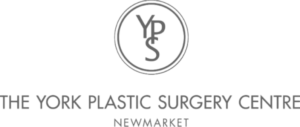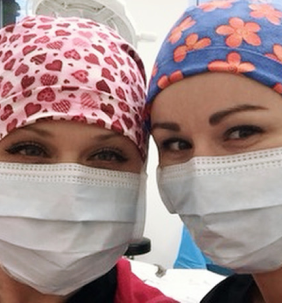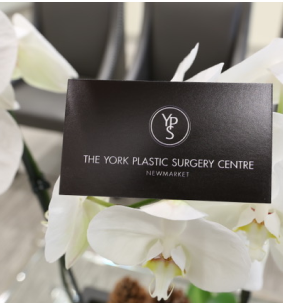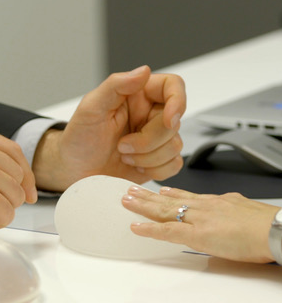Breast Augmentation Techniques: Choosing Your Incision Location
There are three common ways for a plastic surgeon to insert breast implants: using an incision along the border of the areola (periareolar), through the armpit (transaxillary), and under the breast (inframammary). Deciding which incision is right for you depends on several factors, including your personal preference, your surgeon’s recommendations based on their experience and training, and the different risks & benefits of each incision.
Incision around the areola (Periareolar):
If a person has a well-defined areola and the surgeon makes an incision along the exact border, the resulting scar can be very well-hidden. Therefore, in selected patients, the cosmetic result of this technique can be very good. Some disadvantages of this approach include a higher risk of nipple numbness or unusual sensations (dysesthesias), possible impact on breastfeeding, and an increased risk of capsular contracture. Also, if a person has a very small areola, it might not be feasible to make a large enough incision along the border of the areola to insert an implant.
Incision under the armpit (Transaxillary):
This incision has the advantage of being located away from the breast, so once the scar fades it can be well-disguised. This technique is also considered on patients who have very little breast tissue without a well-defined fold under the breast since a scar under the breast could be more visible on these patients. On the other hand, with the armpit incision if a poor scar or keloid forms, it can be quite apparent when the person wears bathing suits and sleeveless garments. Therefore, the armpit incision can be a major advantage or disadvantage depending on how the scar settles. The majority of surgeons who do the transaxillary technique make the implant pocket bluntly with an instrument, and they cannot directly inspect the pocket being made. In this case there is no way to directly control bleeding so either the chest must be tightly compressed after the implants are inserted or wound drains must be used to drain excess blood from the pocket. Despite these limitations, good results can be achieved by surgeons who specialize in this approach. However, it is important to be aware that if revisions are necessary, additional incisions might be required to gain more direct access to the breast implant pocket.
Incision under the breast (Inframammary):
This is probably the most commonly used technique to insert breast implants. In most patients, the incision is well-hidden under the breast, and in cases where the scar exactly along the crease under the breast (the inframammary fold), it can be very well-disguised. This is the preferred technique of Dr. Andrade for several reasons:
- He creates precise implant pockets under direct vision using a fibre-optic lighted retractor, so the rate of implant malposition is low. Fewer patients need revisionary surgery.
- It is straightforward to see and cauterize any bleeding vessels before inserting implants, so drains are not required.
- This incision provides good access to the implant pocket for patients who want a second breast operation (for example, patients whose breasts have changed over time or after childbirth, and who want different implants inserted).
- Some research studies have indicated that the risk of implant capsular contracture is lowest with the inframammary incision. Capsular contracture can lead to breast firmness, pain and a distorted shape so steps should be taken to minimize this problem.
Dr. Andrade routinely uses an insertion sleeve called a Keller Funnel to insert breast implants. This disposable device enables the surgeon to insert implants through a smaller incision, so typically the scar under the breast is only 35-45mm in length (about the length of a paper clip).
In summary, every breast implant technique has unique advantages and disadvantages, but for the reasons mentioned above, Dr. Andrade’s preferred approach for inserting implants in most patients is an incision under the breast. Please note that this article is not intended to be a complete discussion of the topic and is intended to supplement your in-person consultation. You should always make your final decision after a proper assessment from a top-rated, board-certified cosmetic breast surgeon such as Dr. Andrade.








